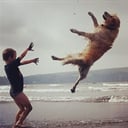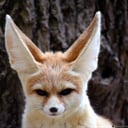Distinguished from other members of the family by its palmate antlers, which is the largest extant deer?
Moose are the largest of all the deer species. Males are immediately recognizable by their huge antlers, which can spread 6 feet from end to end. Moose have long faces and muzzles that dangle over their chins. A flap of skin known as a bell sways beneath each moose's throat. These animals live in the northern United States, Canada and Europe, in areas that have seasonal snow cover. The animals prefer colder climates. They cannot tolerate temperatures above 80 degrees Fahrenheit (27 degrees Celsius) for long because they cannot sweat, and the fermentation caused by their digestion creates a large amount of heat.
Moose are considered the least social animals. The moose's most active times are at sunrise and at sunset. They tend to graze on the leaves, bark, pine cones, twigs and buds of trees and shrubs. They also like to eat aquatic plants like water lilies. Moose have four-chambered stomachs, as do cows. Food is fermented in the first chamber, and nutrients are extracted in the next three.
Females give birth to one baby, which is called a calf. Around 50 percent of calves die due to bear or wolf attacks before they are 6 weeks old.
More Info:
www.livescience.com








